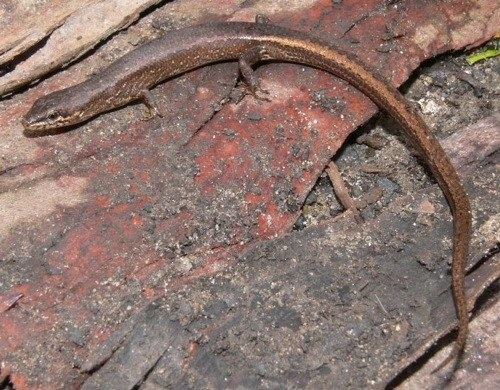Suborder Sauria Family Scincidae Rank Species Subclass Diapsid | Subphylum Vertebrata Infraorder Scincomorpha Subfamily Eugongylinae Phylum Chordata Order Scaled reptiles | |
 | ||
Similar Saproscincus, Scaled reptiles, Lampropholis delicata, Bassiana, Lampropholis | ||
Saproscincus mustelinus, commonly known as the southern weasel skink, is a small species of skink which is endemic to Australia.
Contents
Behavior
S. mustelinus is usually nocturnal, but is most active in the evening and warm mornings.
Diet
S. mustelinus hunts and feeds on small insects and other small invertebrates.
Description
The southern weasel skink is around 45 mm (1.8 in) from snout to vent, is covered in iridescent reddish brown (fine) scales, and has several distinctive white marks behind and below the eye.
Defensive behavior
If frightened this skink has the ability to lose its tail as a defence mechanism; the tail lies on the ground twitching, distracting the predator so the skink can escape.
Habitat
The southern weasel skink tends to utilize existing vegetation and fallen timber for shelter.
Geographic range
The southern weasel skink's distribution forms a coastal strip from south Victoria to southern Queensland.
Reproduction
Females lay up to four eggs per clutch in a communal nest. The nests are normally a dugout, an underground burrow, which contain the eggs of numerous females. Laying normally occurs between spring and late summer.
